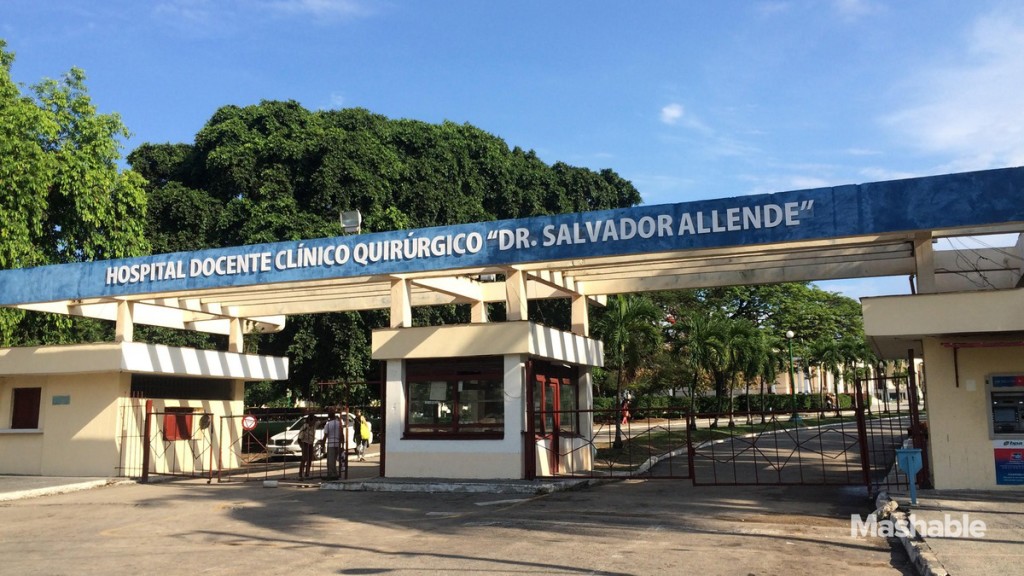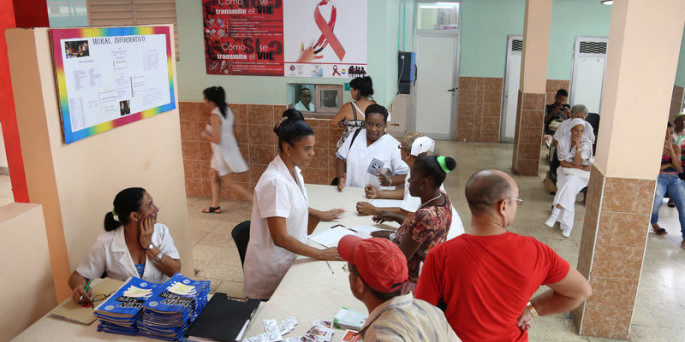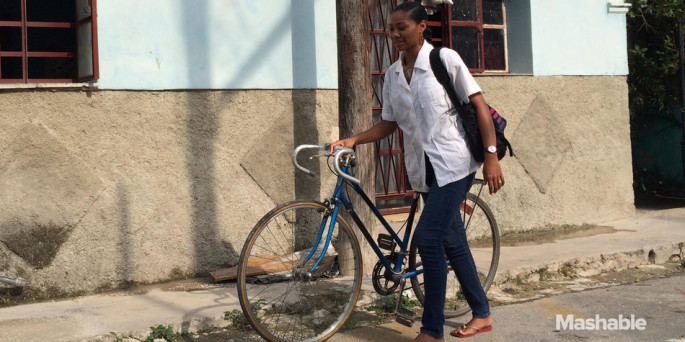HAVANA, Cuba After Hurricane Katrina devastated parts of Louisiana and Mississippi in August 2005, Cuba offered a cadre of doctors and medical supplies to help treat injured and displaced Americans.
Cuba is renowned around the world for the quality of its doctors, but the United States government declined the offer.
Of course, that’s not exactly surprising given the two countries’ decades of animosity. Tension between Cuba and the U.S. is most visibly epitomized by a
still-in-place trade embargo imposed by the U.S. in 1960, one year after Fidel Castro and Ernesto “Che” Guevara led a revolution to turn Cuba into a communist state.
Given the frosty relations and how the U.S. declined Cuban medical aid in 2005, one might reasonably assume the island just 90 miles south of Florida is the last place an American would go for medical school.
One would be wrong.
Lillian Burnett, who is from Oakland, is proof and she’s not alone.
But how does someone get from California to the Cuban capital en route to becoming a certified doctor?
It’s a story that involves Castro, an inspiring presentation back in the Bay Area, a personal desire to do good and a forward-thinking Cuban mission with an international outlook. It’s also a story that shines a light on the
Escuela Latinoamericana de Medicina (ELAM), a program that trains doctors and helps patients worldwide, including in the U.S., even though few Americans are aware of its existence.
Inspiration from Honduras
Burnett graduated from UC Berkeley in 2005 with an eye on becoming a doctor. Soon after, Pastors for Peace, an interfaith organization that aims to help underserved populations, came to Laney College in Oakland to give a presentation about ELAM. An ELAM graduate named Luther Castillo spoke of his own experience in the program and told of the work he was doing back home in Honduras, serving his own Garifuna community, a Central American population of African descent.
“The Garifuna are very much a disenfranchised, oppressed, ostracized people in their countries and Luther was just this amazing young man who was doing amazing work,” Burnett recalled last month, sitting in her small one-bedroom apartment in Havana.
 Hospital Salvador Allende in Havana where Burnett and her classmates study medicine.
Hospital Salvador Allende in Havana where Burnett and her classmates study medicine.
Castillo talked about how he and other ELAM graduates had taken a method of medicine modeled after the Cuban system and applied it to his Garifuna community in Honduras. Small neighborhood clinics served and built relationships with collections of families in particular neighborhoods, where doctors functioned as community leaders as well as medical professionals.
The effect was something more intimate and holistic than the American health care system in which treatment can often feel hasty and impersonal.
“I saw that and was like, ‘Yup, that’s what I want to do,” Burnett says.
That’s the kind of doctor I want to be. I want to be groomed like that. Even if I can’t necessarily come back to the States and practice that way, let me have those values instilled in me as I’m learning this science.”
ELAM brings students from around the world to Cuba for a six-year program, taught in Spanish and covered by scholarships from the Cuban government. (For Americans, those scholarships are administered by the
IFCO/Pastors for Peace partnership.)
Students have to make just one promise: After finishing the program, they’ll return home to work in underserved communities in their own home countries.
ELAM’s six-year program includes more than 10,000 students from more than 120 countries, according to
MEDICC, a non-profit organization that works to facilitate cooperation in medical education between the U.S., Cuba and other countries. As of 2014, ELAM had graduated a total of 23,000 students from 83 countries in Africa, Asia and the Americas since its first class finished in 2005. American graduates, as of 2014 there were more than 100, along with about 100 current students from the U.S., are “overwhelmingly young people of color from low-income families, over half women,” according to MEDICC.
Gail Reed, MEDICC’s research director,
says ELAM is the world’s largest medical school.
Sold on both Castillo’s story and ELAM as a whole, Burnett spent some time in the U.S. taking pre-med courses and saving money, then enrolled in the program and moved to Havana in 2011.
Her journey was just beginning.
Classmates and connections from all over
Burnett says one of her favorite aspects of ELAM is its emphasis on group responsibility beyond cultural lines. A typical group assignment could partner her with students from Lebanon, Pakistan, Mongolia, Ecuador and the Comoros, all of them working together in Spanish. In the eyes of their Cuban professors, success “or failure” is earned together, not as individuals.
“Say the kid from Pakistan and the kid from the Comoros are killing it, but the rest of us are struggling,” she says. “Professors aren’t going to let them get 5s and the rest of us get 2s and 3s. They’ll say, “How come you guys did well and your companeros are having a hard time? Shame on you. You need to help them out. You need to lift them up.”
But the benefits aren’t only educational.
That’s an excellent political diplomacy and international solidarity move, because you’re not going to be so quick to make someone an enemy,” Burnett says. “You have this mentality of, “Nah, man, I went through six years of medical school and some real stuff with my friend from Palestine right there. That’s the homie!”
“You have a responsibility in that, too”
Burnett is currently nearing the end of her fourth year in the program. The first two are spent mostly in the classroom learning hard sciences, the subsequent four doing hands-on clinical work. From day one, however, students get assigned to individual neighborhoods where they go door-to-door to take people’s temperatures, test blood pressure and inquire about people’s general well-being.
It’s not an intrusion to those residents, though, Burnett says, since they’re used to such a community-based healthcare model. Typically, a clinic called a consultorio will serve a given neighborhood; the doctor often lives above the clinic where he practices and gets to know local families well. Then a bigger clinic will offer more specific care for a collection of neighborhoods, with hospitals existing as a top-tier for last resort or in case of emergencies.
Aspects of that connected, social, community-based system are what Burnett and many of her fellow ELAM students hope to take back to their own countries after graduation.
“There’s a way of interacting with people and being present in the community that’s not just scientific or hard medicine,” she says. “I’d really like to practice in a community to help it mobilize around its own health.”
Burnett mentions her own hometown of Oakland.
“Cubans would say there’s a role the physician has to play around addressing gun violence in the community, around addressing addiction in the community, addressing police brutality in the community,” she continues. “Those are things people are dying from, even if there’s not a pill for them. You need to understand the impact that all those other social, political economic stressors have on someone developing an infectious disease or diabetes or hypertension in that atmosphere.
“There’s medicine in that, too. You have a responsibility in that, too.”


















